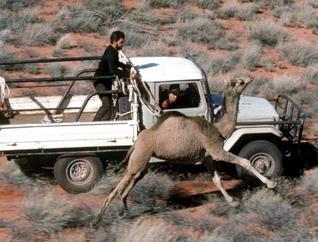
Australia's feral camel population has dropped by an estimated 2,50,000 in recent years, but the arid outback is still home to the world's largest wild herd, officials said Tuesday.
The Australian Feral Camel Management Project said about 7, 50,000 camels were thought to roam the country's desert heartland.
"Between 2001 and 2008, it was estimated that there could have been as many as a million feral camels in the outback," said Jan Ferguson, the managing director of Ninti One, which manages the project.
"Since then, however, there has been a major drought, the feral camel management programme has come into effect and population survey techniques have been improved."
Camels, first introduced as pack animals to help early settlers in the 19th century, roam wild in the States of Western Australia, South Australia and Queensland in the east, as well as the Northern Territory.
About 85,000 were culled under a plan to reduce their impact on sensitive areas and native animals but Ferguson said some populations were still too dense.
Wildlife scientist Glenn Edwards said that the latest monitoring, under which about 50 camels fitted with special collars were tracked using satellites, provided a clearer picture of the extensive damage they caused.
"Feral camels can travel 70 kilometres in one day, and hundreds of kilometres within a week, over incredibly harsh terrain," he said.
"We know that when they herd, they can converge on a natural waterhole used by native animals, and drink it dry within days.
"This has a devastating effect on the local flora and fauna and shows exactly why we need to control the population density of these animals."
With a few natural predators and vast sparsely-populated areas in which to roam, feral camels have put pressure on native Australian species by reducing food sources, destroying habitat and spreading disease.
During some of the worst months of drought, thousands of thirsty camels even besieged a remote town in search of water, leaving residents scared to leave their homes.AFP
Source: The Hindu,25th July 2012